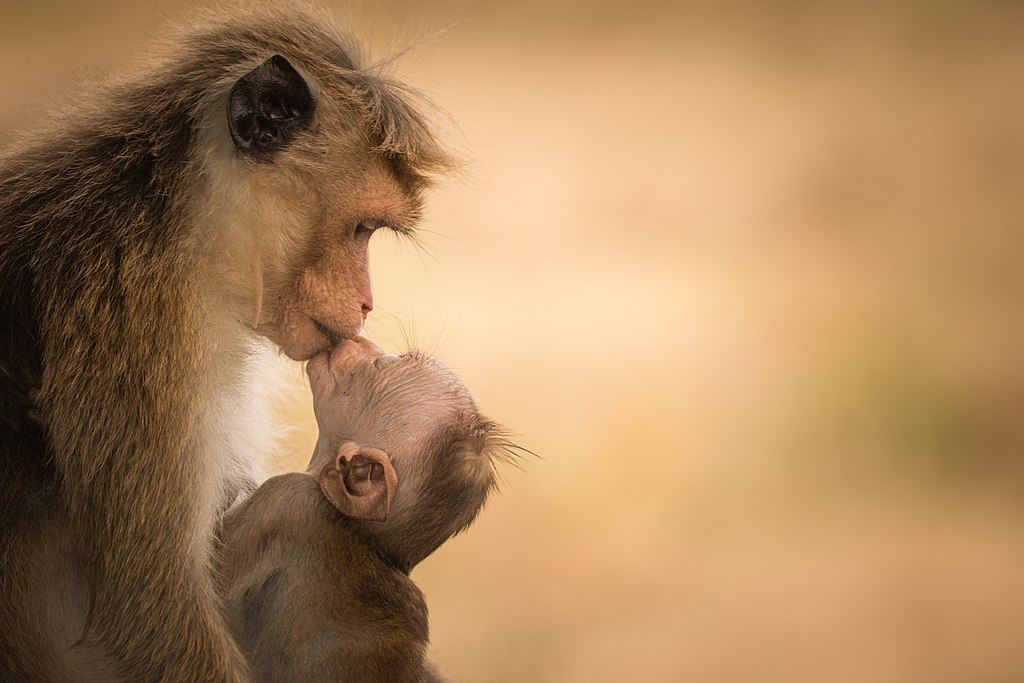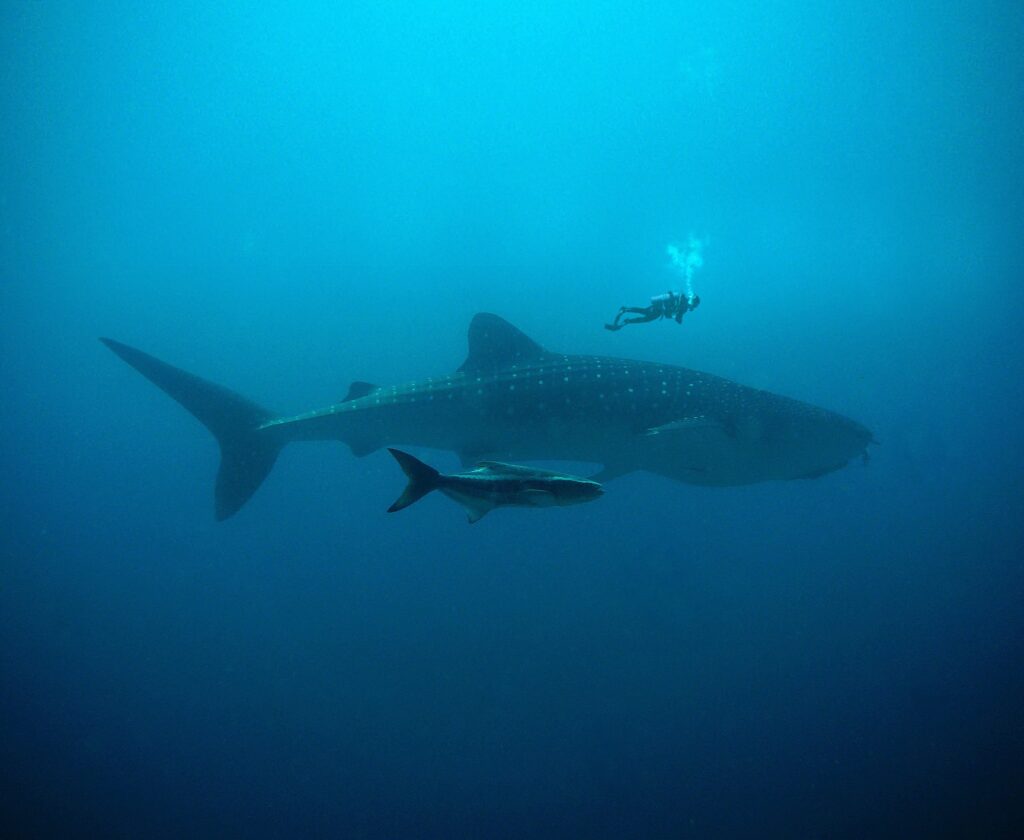
Mother Toque macaque (Macaca sinica) and her child at Katagamuwa Sanctuary, Sri Lanka. Photo: Senthi Senthilverl
By Mariana Meneses
It seems obvious that bigger animals will eat more to survive.
Indeed, while we, comparatively tiny, humans might eat a few pounds a day, whales, the world’s biggest mammals, might consume between 10 and 20 tons of seafood on a good day. As Dr. Matthew Savoca, a Postdoctoral Research Fellow at Stanford University notes, it’s “probably decades of our eating (in) one day for them.”
Scientists have long known that there is an important connection between body size and how we consume and manage, or metabolize, energy from the food we eat. However, they still debate the ‘why’, and, as recent research shows, evolution might have more to do with biology and metabolism than with physics.
The word ‘metabolism’ refers to the chemical reactions that turn the food we eat into the energy that powers our cells, allowing us to think, move and do everything else.
In the 1930s, Max Kleiber observed that the relationship between metabolism and body size is not linear. Instead, for most animals, metabolic rates scaled to the 3⁄4 power of their masses – so a cat having a mass 10 times that of a mouse would only consume about 3.2 times the daily energy the mouse needs. This relationship became known as Kleiber’s Law and has remained fairly influential since it was established nearly a century ago. However, the reasons for this disproportionate relationship have remained puzzling to scientists for many decades.
“Body size is among the most influential variables one could measure in attempting to understand interspecific variability in metabolic requirements” – says evolutionary biologist and ecologist Chuck Price.

Allometry, or biological scaling, is the study of how changes in size influence organisms’ traits, such as their metabolic rates. Photo: Pixabay
The observed relationships between metabolism and body size in the animal kingdom were, until recently, considered evidence that biological processes follow the laws of physics.
The Dynamic Energy Budget (DEB) theory has been commonly applied to over a thousand species, with direct implications for conservation, ecology, and more. It’s based on the idea that the physics of energy uptake and allocation drive biological processes, including the observed allometric scaling relationship between metabolic rate and body size. In other words, it offers a quantitative framework to understand organisms’ metabolisms based on assumptions about energy intake and use, as prescribed by the laws of thermodynamics.
Allometry is the study of biological scaling relationships, or how the characteristics of living creatures (e.g. brain size and metabolic rate) change with size (Nature Education).
Despite its critics, the DEB theory has been supported by some significant observations.
“Results provided by DEB intra- and inter-specific scaling relationships are indistinguishable from the empirical patterns revealed by allometry,” says Dr. Marko Jusup, professor of mathematical biology at the Tokyo Tech World Research Hub Initiative. In the past decade, researchers like Dr. Tânia Souza, from the Marine, Environment, and Technology Center, in Portugal, provided support for this theory in a paper entitled “Dynamic energy budget theory restores coherence in biology.”
However, a recently published paper led by Dr. Craig White, Head of the Evolutionary Physiology Research Group at Monash University, Australia, is challenging previous conclusions, and conventional wisdom that biological patterns derive from physical constraints. The researchers developed a new mathematical model that indicates all three of metabolism, growth, and reproduction are connected and together drive biological evolution.
“We devised a mathematical model of animal growth that describes how animals shift their energy allocation from growth to reproduction as they increase in age and size and show that lifetime reproduction is maximized when metabolism scales out of proportion with size,” said Dr. White.

“Darwinism is a theory of biological evolution developed by the English naturalist Charles Darwin (1809–1882) and others, stating that all species of organisms arise and develop through the natural selection of small, inherited variations that increase the individual’s ability to compete, survive, and reproduce”( Wikipedia). Photo: Julius Jääskeläinen
He and his team analyzed data from over 10,000 species from 12 animal phyla and showed that observed allometric patterns “can also be explained by evolution acting concurrently on organisms’ metabolism, growth, and reproduction”. Their prediction proved that growth and reproduction increase with metabolic rate, as species’ lifetime reproduction is naturally (i.e. evolutionarily) optimized.
The new research offers yet more confirmation of how the theory of evolution, famously proposed by Charles Darwin in the 19th century, has allowed a continuous process of biological optimization through natural selection.
“Despite the fact that living organisms cannot break the laws of physics, evolution has shown itself to be extraordinarily adept at finding loopholes. (…) Simply put, classic theories argued that animals have the metabolism they have because they must, we find they have the metabolism they have because it’s the best,” concludes Dr. White.
Finally, Dr. White makes a warning that human activities can negatively impact animal populations in the future. This is because animals may become less efficient at using energy, grow faster, and have fewer offspring during their lifetime. This could have worrisome consequences for the future replenishment of these animal populations.



